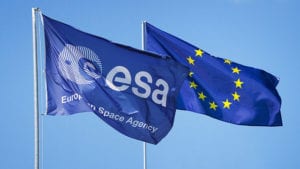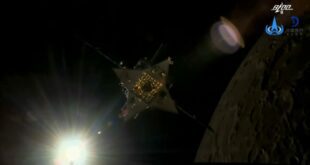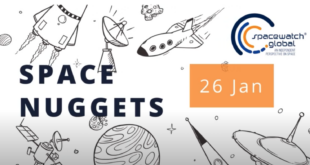 As part of the partnership between SpaceWatch.Global and the European Space Policy Institute, we have been granted permission to publish selected articles and briefs. This is ESPI Briefs No. 36: ‘European RTD Policy, Competitiveness and Space’, originally published in November 2019.
As part of the partnership between SpaceWatch.Global and the European Space Policy Institute, we have been granted permission to publish selected articles and briefs. This is ESPI Briefs No. 36: ‘European RTD Policy, Competitiveness and Space’, originally published in November 2019.
1. A successful European RTD framework …

Research and technological development policies have been a staple of European institutional efforts since the first European Community Treaties, having as core objective to strengthen the scientific and technological basis of European industry and to encourage it to become more competitive at international level. In the space domain, RTD&I is supported either at national level mostly through the efforts of national space agencies; or at European level in the framework of ESA-coordinated programmes along the mandate given to the Agency by its Member States, and more recently by the EU, in particular through space-oriented calls in the EU Research Framework Programmes.
Despite a common overarching goal, ESA and EU have different approaches to support to R&D. ESA’s activities in technology development are mostly agenda-driven, either focused on developing the technologies that are required for the accomplishment of its future missions or for the development of space-based applications according to the decisions made by its Member States. On EU side, the Horizon programmes do not pursue such specific agenda, but rather allocate funding to projects and proposals that provide the best value for money in domains of research defined by the Commission. Furthermore, EU-funded projects most often address early stages of developments and mostly focus on low Technology Readiness Levels of technologies.
Regardless, over the past decades such concerted efforts have been instrumental and undoubtedly effective in supporting the European space industrial base to attain world-renowned achievements as seen today, strengthening European strategic autonomy, progressively reducing its technological dependence, as well as sharpening and safeguarding European industries’ competitive edge on international markets.
Today, the topic of competitiveness is as high as ever on the agenda of the incumbent European Commission. Key negotiations are underway under Finland’s Presidency of the EU Council on the next Multiannual Financial Framework and its research component, Horizon Europe, including the consultation to prepare a “Strategic Research and Innovation Agenda (SRIA) for EU-funded Space Research”. On ESA side, the Agency’s Ministerial Council, named Space19+, took place on 27-28 November with a substantial increased funding allocation for its basic science and technology programme.
2. … in an increasingly competitive environment
When looking at the global landscape, rapid evolutions are taking place in the space sector as well as in the broader geopolitical setting. Current trends, including a growing number of global space actors with innovative and aggressive commercial strategies, suggest that the European industry will face an increased competitive pressure in the coming years on international markets. Indeed, Europe successfully managed to develop a highly performing and competitive offer against a global competition mostly dominated by large U.S. manufacturers. It now has to face a situation where newcomers like China are improving at a fast pace their level of technological performance while some U.S. companies are decidedly developing cheaper commercial offers
In light of this, questions arise on how this evolving dynamic could affect the future shaping of European RTD policy, and whether the existing framework – key component to support competitiveness – will be adequate also in the future to fulfil such vital objective.
3. A risk of divergence between public and private sector needs
One of the main issues that might arise is the risk of divergence between the objectives of European RTD policies for institutional programmes on one hand, and the requirements to effectively support industry competitiveness on the other hand. Historically, RTD investments served two strategic objectives at the same time: the realisation of ambitious public space programmes, and – in doing so – supporting European industry in the development of commercial offers to gain substantial shares of other accessible markets.
However, in today’s changing environment, industry increasingly needs support that can:
- be quickly mobilized to face a fast-evolving competition,
- accommodate the development of ready-made products or services,
- address innovation in manufacturing processes.
With the noticeable exception of ESA ARTES, these features are not part of the objectives assigned to European public RTD support programmes, which usually focus on low TRL research, in a long-term perspective.
4. Some important questions on the way forward
In order to reconcile the various objectives to be pursued through a European Space Research, Technology, Development & Innovation policy, the core question is therefore to clarify the priorities of the institutional support programmes. Several issues are at stake:
First and foremost, the scope of public programmes should be extended in order to be able to accompany innovative developments closer to the markets,
Second, the prioritization of activities should be set along a process accounting for the needs of all public and private stakeholders in order to cope with both the short-term needs of industry business and the broader strategic and political imperatives of institutions, including technological non-dependence,
Third, the governance of public RTD programmes should be set according to the objectives pursued. In particular, if support to competitiveness in the new landscape is to be maintained as a major objective, industry should be more proactively involved in the selection of activities and oversight of their implementation.
Rights reserved – this publication is reproduced with permission from ESPI. “Source: ESPI “ESPI Briefs” No. 36, November 2019. All rights reserved”
For more articles please visit ESPI website (www.espi.or.at).





